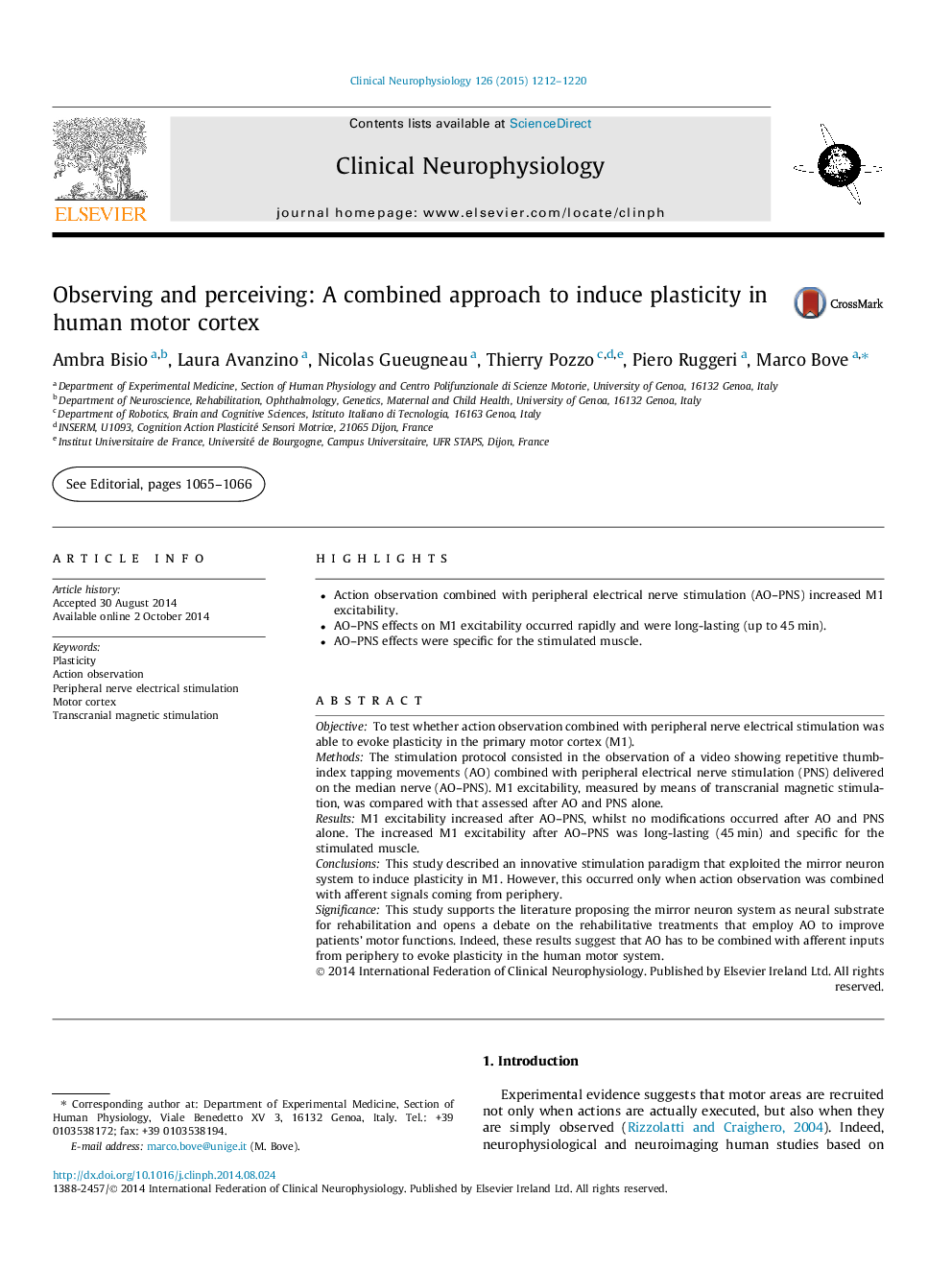| Article ID | Journal | Published Year | Pages | File Type |
|---|---|---|---|---|
| 6008027 | Clinical Neurophysiology | 2015 | 9 Pages |
â¢Action observation combined with peripheral electrical nerve stimulation (AO-PNS) increased M1 excitability.â¢AO-PNS effects on M1 excitability occurred rapidly and were long-lasting (up to 45 min).â¢AO-PNS effects were specific for the stimulated muscle.
ObjectiveTo test whether action observation combined with peripheral nerve electrical stimulation was able to evoke plasticity in the primary motor cortex (M1).MethodsThe stimulation protocol consisted in the observation of a video showing repetitive thumb-index tapping movements (AO) combined with peripheral electrical nerve stimulation (PNS) delivered on the median nerve (AO-PNS). M1 excitability, measured by means of transcranial magnetic stimulation, was compared with that assessed after AO and PNS alone.ResultsM1 excitability increased after AO-PNS, whilst no modifications occurred after AO and PNS alone. The increased M1 excitability after AO-PNS was long-lasting (45Â min) and specific for the stimulated muscle.ConclusionsThis study described an innovative stimulation paradigm that exploited the mirror neuron system to induce plasticity in M1. However, this occurred only when action observation was combined with afferent signals coming from periphery.SignificanceThis study supports the literature proposing the mirror neuron system as neural substrate for rehabilitation and opens a debate on the rehabilitative treatments that employ AO to improve patients' motor functions. Indeed, these results suggest that AO has to be combined with afferent inputs from periphery to evoke plasticity in the human motor system.
